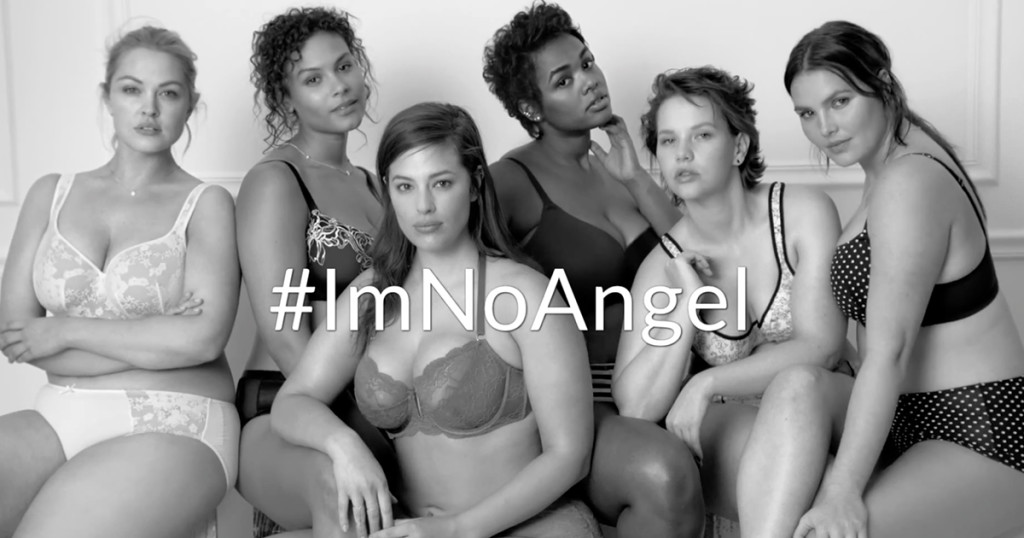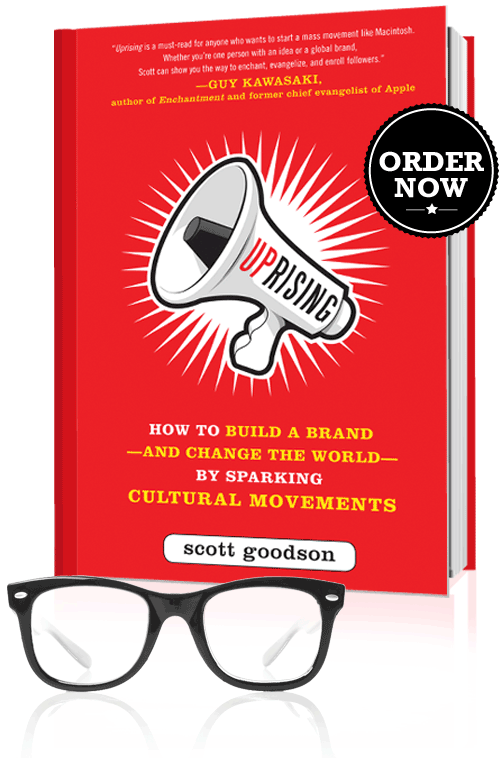I’m No Angel (#ImNoAngel) by Lane Bryant is a good example of Movement Marketing
In today’s “hyperconnected, ultra-competitive, and supercluttered marketplace,” doing more of the same big idea advertising on mostly mainstream media channels isn’t going to work anymore.
Consumers are getting jaded and overloaded with information – much of which has little or no relevance to their lives nor their interests.
What can your company do to win over the increasingly cynical consumers and clients? How can you swing your potential customer’s loyalties over to your side?
Enter Movement Marketing
Written in a highly persuasive prose, Scott Goodson’s book Uprising: How to Build a Brand and Change the World by Sparking Cultural Movements argued that the future of your business is seeded in revolutions both big and small.
From the Arab Spring, Occupy Wall Street, and hand-crafted bamboo bikes, to Pepsi’s “Refresh” Project, Goodson explained that citizens and companies alike are now starting movements to get their message across. Leveraging on the ease of starting a case on social media networks and other technology channels, they work on the basis of seeding ideas which are spread across networks of believers and fans.

Hand-crafted bamboo bicycles are a movement both literal and figurative! (source of image)
With this fundamental shift, businesses need to change their entire marketing model. Instead of persuading individuals to buy products or services, they should understand what consumers truly care about and find ways to align themselves in a meaningful (as opposed to a pretentious) manner.
The 5 Stages of Movement Marketing
To kick start any movement, companies should consider how they can ignite and propel their organisations towards the five stages of movement marketing.
These are:
1) Strategy
Develop a strategy for movement marketing by understanding the insights and motivations behind public and consumer preferences and behaviours.
2) Declare
Create a platform and use it to declare the movement. This can be both online and offline. Manifest your movement both internally within your company and externally with your stakeholders.
3) Unite
Find a way to unite your provocateurs, launch the movement, test it and adapt it along the way. This can be done through a pivotal activity or event.
4) Scale
Employ the tools of communication (eg social media channels like Facebook, blogs, Twitter, WhatsApp, YouTube, as well as mainstream media) to go massive. Build the communications infrastructure in advance to ensure that you are ready to generate waves.
5) Sustain
Maintain the momentum, continually providing content (either from within or preferably crowdsourced from supporters).
Adapt and modify on the fly depending on what works and what doesn’t. Measure success.
Look for “ideas on the rise”

Lance Armstrong partners Nike for Livestrong (source of image)
With numerous examples and case studies from the worlds of charity (Charity:Water), politics (No Labels by Mark McKinnon), health and sports (LIVESTRONG by Nike and Lance Armstrong), craft (Handmade Nation’s Faythe Levine), and organisations themselves (“Rise” by the Mahindra Group), the book highlighted how “ideas on the rise” can be tapped on to start a marketing movement.
To do so, you need to ask the right questions.
Instead of asking “How can we get more people to buy this product?” or “What is the unique selling proposition of this new service,” your company should find out what’s going on in the world, what people care about, and what’s culturally relevant.
By keeping their ear on the ground and taking a stand on a cause that their consumers are fired about, you can better ride the wave of uprisings while being seen to contribute to your communities.
Match movements with corporate DNA
To ensure that companies are not seen as exploitative, Goodson suggested that you should look deep within the DNA of your organisations.
Spark the change from an inside-out manner. Ensure that there is a good fit between what your movement seeks to achieve, and what your organisation is known for.
To spark off movements internally within your corporate community, here’s what you can do.
First, identify your areas of expertise and share them with your followers, colleagues or members.
Next, create platforms that can connect everybody – preferably an online one which is easier to manage – and provide useful and inspiring content in a consistent and calibrated manner.
After you have done that, find ways to equip your stakeholders with information tools that they can use. This can include training in social media marketing, or other forms of evangelistic communication.
Finally, create an event that will rally the community and generate enthusiasm. Make this the high point of your movement.
9 ways to communicate a movement
From his company StrawberryFrog‘s experience, Goodson proposed that the effective communication of a movement idea should take place through the following practical steps:
- Align with a powerful idea on the rise to define a culture.
- Create content/actions/tools/events/communities to draw people to this idea.
- Start in places where conversations are already happening.
- Recruit your most outspoken advocates.
- Use mass communications to amplify to a wider audience.
- Curate the idea to be searchable via search engine optimisation (SEO).
- Activate word of mouth with PR, social media, and content placement.
- Invent ownable media in online and offline channels to continue the conversation. Movement “swags” like flags, banners, T-shirts, wristbands and the like are useful examples of these.
- Use direct marketing and promotions to encourage purchase.
As you can see, movement marketing works best through platforms that are inherently digital and social.
While offline communication methods are helpful in stirring the emotions of followers and rousing them to take action, having a strong “home base” on the social web is a necessary start for movement marketing.
Align corporate values to societal concerns
Rooted in passion, deep-seated emotion and a propensity for righteous (or otherwise) action, movements will increasingly be a way of life for many. To ride this new wave, companies should examine how their missions and visions can achieve synergy with the greater good of society.
While newer companies like Zappos.com and TOMS are exemplars of this new sensibility, older companies such as Coke (“Live Positively”), Unilever (Dove’s “Campaign for Real Beauty”) and Levi’s (“Go Forth” as shown below) are also embracing the new movement towards movement.
Ready to start your movement?
Starting a movement isn’t going to be a walk in the park for most organisations.
Swallowing the “movement” pill requires companies to be a lot more open, transparent and responsive to their stakeholders. Anything which reeks of insincerity or superficialness will result in scathing backlash.
To play in this new arena of marketing, companies must be prepared to say they’re sorry, correct any missteps quickly and take affirmative actions to regain the trust of the public.
What are the good examples of movement marketing which you have seen in recent years?
Courtesy of Scoot Goodson’s Cultural Movement Blog


